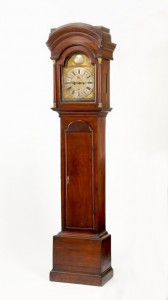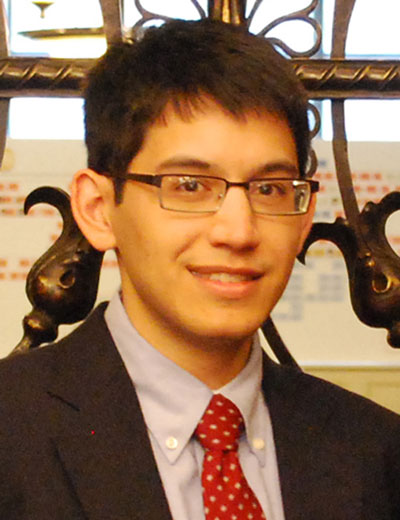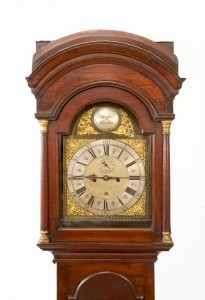 Fig. 1. Benjamin Bagnall clock, constructed c. 1725; NEHGS Special Collections. Photo by J. David Bohl
Fig. 1. Benjamin Bagnall clock, constructed c. 1725; NEHGS Special Collections. Photo by J. David Bohl
The name Benjamin Bagnall holds a place of distinction in the annals of Boston’s early history. Bagnall is often recorded as one of the city’s earliest clockmakers, and credited—as Morrison Heckscher notes—with constructing “a town clock for the New Brick Meeting-House” in Boston c. 1717.[1] While the building upon which Bagnall constructed his town clock no longer stands, a few other examples of Bagnall’s work survive to this day. The works of a tall case clock, in the possession of the New England Historic Genealogical Society (Fig. 1), is one of the Bagnall commissions that does survive.[2]
According to NEHGS records, Benjamin Bagnall constructed the works of the clock about 1725. Bagnall, who was born in England c. 1689, acquired the skills associated with the clock-making trade in his native country before arriving in Boston c. 1713. After his arrival in Boston, Bagnall married Elizabeth Shove of Charlestown, Massachusetts. By this marriage, Bagnall had seven children, including Samuel and Benjamin Bagnall. Both Samuel and Benjamin would go on to become skilled clockmakers, and examples of their work survive to this day.[3] Clock making, in a sense, united the earliest generations of the Bagnall family, and Benjamin doubtless trained his sons in this field.
Bagnall appears to have enjoyed a positive reputation in the local Boston community, as demonstrated by his friendship with prominent individuals, including Governor Jonathan Belcher (1682–1757).[4] The frequency with which Bagnall was selling and purchasing land in the city also suggests that his clock-making business flourished.[5] The notes of James Edward Conlon (1880–1948), a Boston clock maker and antiques dealer of the early twentieth century, lists ten land transactions in which Benjamin’s name appeared between the years 1723 and 1738.[6] Benjamin Bagnall died in Boston 11 July 1773.[7]
The Bagnall clock in the NEHGS collection is an exceptional example of an early eighteenth-century tall-case clock. The hood and body of the clock case are constructed entirely of black walnut.[8] The dial face is composed primarily of brass along with what appears to be an attached silver ring, upon which are engraved the Roman numerals 1–12. The silver ring is further embellished by delicately engraved fleur-de-lis motifs located between each of the Roman numerals. The spandrels, or corners, of the dial face are decorated with elaborate pierced brass pieces. The dial face also features hour, minute, and seconds hands, a winding hole, and a calendar aperture. Benjamin Bagnall’s name, along with the location of his shop (Boston), can be found engraved in a circular cartouche just above the silver ring (Fig. 2). The clock was bequeathed to NEHGS by Miss Martha Wheelwright in 1867.[9]
If the clock were not engraved with a maker’s name, other materials and construction details would help date the piece. Edgar G. Miller, Jr. notes several characteristics that date the works of an antique clock. First, virtually all dial faces produced before the year 1770 were constructed using brass, as is the case with the Bagnall clock.[10] Second, the square shaped face of the dial with arched top (similar in shape to a tombstone) was a popular design characteristic used between the years 1725 and 1800.[11] Lastly, the pierced brass decorations ornamenting the corners of the dial face were typical of the early- to mid-eighteenth century. In later years, dial faces were commonly constructed using a thin layer of metal, and decoration was applied to the surface of the metal using paint.[12]
The finished time piece (the clock in its tall wooden case) was the product of several individuals, not just the individual whose name was engraved on the dial face. The clock maker—in our case, Benjamin Bagnall—was responsible for constructing the works, or the clock mechanism itself.[13] Clock parts were seldom made in America in the early eighteenth century, and it seems very likely that Bagnall relied on English imports to construct the mechanics of the clock.[14] A cabinetmaker (i.e., furniture maker) was responsible for constructing the case in which the works were placed.[15] In some instances, a family would purchase the works of a clock, and then seek out a cabinetmaker to construct the clock case.[16] Other tradesmen could also be employed in the construction of a clock, including engravers, painters, and metalworkers.[17] However the clockmaker, as Edgar G. Miller writes, ultimately “…controlled the form and appearance of the completed clock.”[18]
Tall case clocks such as the Bagnall clock in the possession of NEHGS were more commonly found in the homes of the wealthy when it was constructed c. 1725.[19] The majority of Bagnall’s contemporaries likely relied on public clocks—such as the one constructed by Bagnall for the meeting-house in Boston—or sun dials to obtain the exact time of day.[20] Over the course of the century between 1750 and 1850, clockmakers would utilize different construction materials, invent new clock designs, and employ more efficient production methods that would increase the production of clocks and make them more affordable to the average American.[21]
While a work of art in and of itself, the Bagnall clock is also a valuable genealogical artifact. The physical object provides insight into Bagnall’s character in a way that the written record cannot. The finished product—which is both simple and elegant—is a testament to Bagnall’s mechanical skill as a clockmaker, his artistic eye, and his ability to work effectively with multiple groups of tradesmen to construct a completed timepiece. The fact that the clock has survived and has been admired for nearly 300 years is further evidence of the genius and skill of its maker.
For another post on an example of early American furniture in the NEHGS collection, click here.
Notes
[1] Morrison H. Heckscher, Late Colonial Period: The Queen Ann and Chippendale Styles, vol. 2 of American Furniture in the Metropolitan Museum of Art (New York: The Metropolitan Museum of Art and Random House, 1985), 290, viewed at Google Books. See also Amos G. Avery, “Clocks and Watches,” in The Concise Encyclopedia of American Antiques, ed. by Helen Comstock (New York: Hawthorne Books, Inc., 1969), 477, and Irving Whitall Lyon, The Colonial Furniture of New England: A Study of the Domestic Furniture in Use in the Seventeenth and Eighteenth Centuries (New York: E.P. Dutton, 1977), 252-53.
[2] Examples of clocks constructed by Benjamin Bagnall are rare. At present, several other institutions possess clocks with works constructed by Benjamin Bagnall, including The Metropolitan Museum of Art in New York, The Harvard Art Museums in Cambridge, Massachusetts, and the Dallas Museum of Art in Texas.
[3] “CLOCK. Benjamin Bagnall (1689-1773), Boston, 1725,” digital label copy file, NEHGS Special Collections. The works of a clock constructed by Samuel Bagnall survive in the collections of the Metropolitan Museum of Art in New York. For information on the clock, see Heckscher, Late Colonial Period: The Queen Ann and Chippendale Styles, 291.
[4] “CLOCK. Benjamin Bagnall (1689-1773), Boston, 1725,” digital label copy file, NEHGS Special Collections.
[5] Ibid.
[6] Undated research notes on Benjamin Bagnall, personal papers of James E. Conlon of Brookline, Massachusetts (1880-1948), in the possession of Eileen Pironti.
[7] “CLOCK. Benjamin Bagnall (1689-1773), Boston, 1725,” digital label copy file, NEHGS Special Collections.
[8] Ibid.
[9] Ibid.
[10] Edgar G. Miller, Jr., American Antique Furniture: A Book For Amateurs, 2 vols. (Baltimore: The Lord Baltimore Press, 1937), 2: 876.
[11] Ibid., 877.
[12] Ibid., 876-77.
[13] Ibid., 866.
[14] Ibid., 909.
[15] Ibid., 866.
[16] Mary H. Northend, Colonial Homes and Their Furnishings (Boston: Little, Brown and Company, 1920), 152-53.
[17] Miller, American Antique Furniture, 2: 866.
[18] Ibid.
[19] Avery, “Clocks and Watches,” 478.
[20] Ibid., 491, 492.
[21] Ibid., 476-81.
Share this:

About Dan Sousa
Dan Sousa currently serves as the Decorative Arts Trust Curatorial Intern at Historic Deerfield, Inc.—a museum in Deerfield, Massachusetts—where he is involved in several research, exhibition, and publication projects. His research interests include early American history and material culture, Massachusetts history and genealogy, Boston history and genealogy, and the history of American Catholicism. He holds a B.A. in history from Providence College and an M.A. in history from the University of Massachusetts, Boston.View all posts by Dan Sousa →
